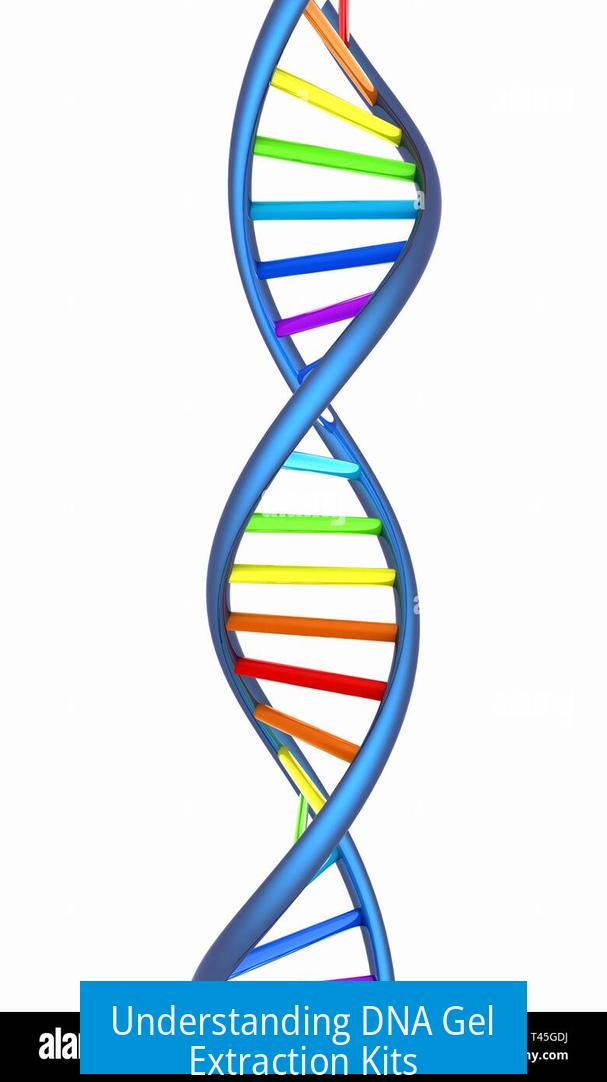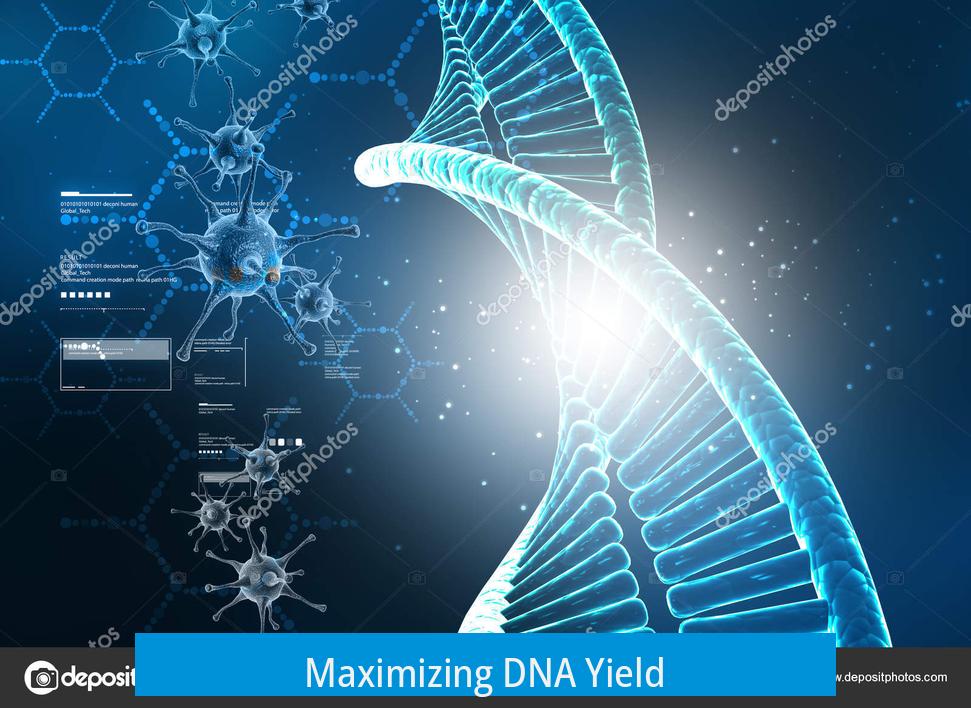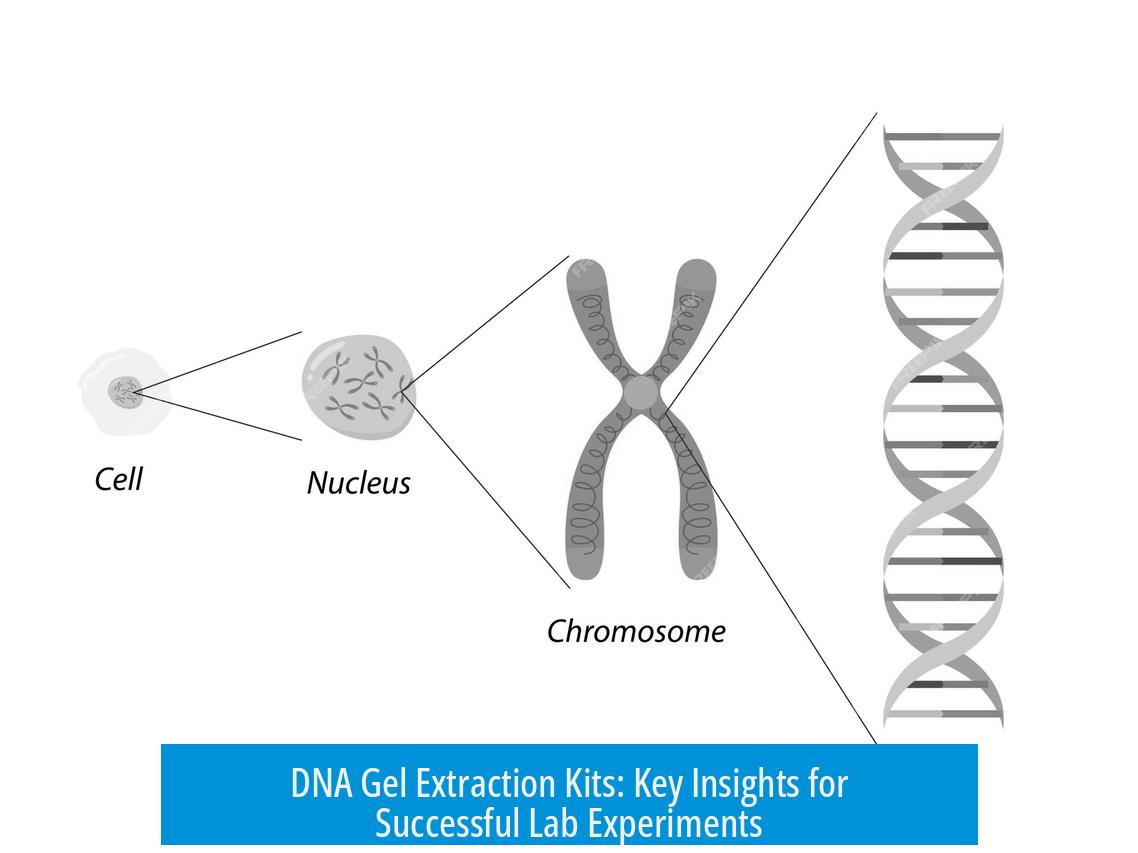Understanding DNA Gel Extraction Kits

DNA gel extraction kits from major manufacturers generally perform similarly, offering reliable and effective purification of DNA from agarose gels. Users often find minimal differences between brands such as Qiagen, Zymo, Macherey Nagel, Promega, and NEB. Each kit successfully isolates DNA with good purity, making them suitable for downstream applications.
General Performance and Brand Comparison
- Qiagen kits are widely used for their speed and straightforward protocols.
- Zymo and Macherey Nagel kits also show consistent results in many labs.
- NEB kits are preferred when high DNA concentration is critical due to low elution volumes.
- Promega kits offer simplicity and rapid active processing time (~30 minutes).
Challenges in DNA Recovery
Low DNA recovery is the most common challenge. Typically, kits recover only about 10-20% of DNA present in the gel slice. Despite this, the quality of the extracted DNA remains high. Recovery rates across brands tend to be similar, reflecting inherent limitations in gel extraction technology.
To improve yield, increasing the elution volume to 10 μl or more can help, although it may dilute the DNA. The NEB kit favors low elution volumes, balancing concentration with yield efficiently.
Maximizing DNA Yield

Successful gel extraction depends on minimizing the amount of gel excised. Thick or large gel slices reduce column capacity, trapping DNA and lowering recovery. Users should:
- Excise the smallest possible gel slices.
- Avoid column overload by limiting gel mass per extraction.
- Perform multiple extractions for the same sample if necessary.
- Use simplified protocols without weighing the gel when validated.
Summary of Key Points
- Most major DNA gel extraction kits perform equivalently in purity and reliability.
- Low DNA recovery (~10-20%) is typical across all kits.
- Elution volume adjustments can improve yield but may affect concentration.
- Minimize gel slice size to increase DNA recovery.
- NEB kits are advantageous when high DNA concentration is needed.
DNA Gel Extraction Kits: What You Need to Know to Nail Your Next Lab Experiment
If you’re wondering which DNA gel extraction kit really delivers the goods, the honest answer is that most major brands perform quite similarly. So, instead of hunting for a mythical “best” kit, it’s better to understand the factors that actually impact your DNA yield and quality. Let’s unpack what’s really going on behind those neat little boxes labeled “DNA Gel Extraction Kit.”
When deciding among kits from Qiagen, NEB, Zymo, Macherey-Nagel, or Promega, the truth is rather simple — they all work, but user experience and tiny technical tweaks can make a huge difference. Here’s a detailed look that combines practical tips with what’s true across the board.
The Great Level Playing Field of Gel Extraction Kits
First off, your DNA extraction kit’s brand often doesn’t make or break your results. Most major manufacturers produce kits that function similarly. Qiagen is popular and widely trusted, but labs using Zymo, Promega, or Macherey-Nagel report equal satisfaction. This isn’t marketing hype; it’s science backed by lab benches worldwide.
What really gets you stuck is NOT the kit, but the elusive struggle to get a decent amount of DNA after extraction. Losses occur everywhere, no matter what brand you pick.
Why Does Your DNA Yield Feel Like a Disappearing Act?
Let’s tackle the most common gripe: low DNA recovery. A recovery rate of 10-20% might make you wince, but that’s the reality even the best kits face. The quality of your isolated DNA usually remains good, but the quantity tends to be frustratingly low.
- Using 6 microliters (μL) as elution volume is like sending home half your DNA in a taxi. Opt for 10 μL or more to scoop up a better share.
- The NEB kit earns favor among many for its very low elution volume option, which translates to shiny, concentrated DNA ready for ligation.
- Others swear by Promega’s Wizard SV Gel and PCR Clean-Up System for straightforward protocols and reasonable yields.
Getting enough DNA concentrated enough for cloning is often the bottleneck. More importantly, it’s how you handle your gel slices and columns that often decides your success.
Bigger Isn’t Better: Minimize Your Gel Slice for Maximum Impact
Here’s a nugget of wisdom that saves many a frustrated researcher:
“The biggest obstacle is not overloading the columns with too much extra gel.”
Why? Because excess gel can clog or saturate the purification column, drastically reducing DNA capture efficiency. Also, smaller cuts mean less agarose, which lets chemicals efficiently release DNA from the gel into the binding solution.
If it’s manageable, consider multiple extractions of smaller gel slices rather than one massive chunk. This simple change can improve your yield like magic.
Easy Kits for Busy Scientists
Time is precious. Let’s talk ease of use:
- Qiagen: Known for a reliable, fast workflow. Simplified protocols often skip weighing gel slices and still get consistent results.
- Promega: Their Wizard SV kit is super user-friendly, with the entire active work time under 30 minutes — perfect for tight lab schedules.
- Zymo and Macherey-Nagel: These get good reviews and deliver dependable purifications, often at a good price point.
All these kits share the same core process: dissolve gel slices, bind DNA to a column, wash impurities out and elute pure DNA. Speed and minor kit quirks differentiate them.
Pro Tips to Squeeze More DNA from Your Gel Extraction
Think of DNA gel extraction like squeezing toothpaste out of a tube: there’s always some left stuck inside, but technique helps:
- Use a larger elution volume: While tempting to elute in as little as 6 μL to get concentrated DNA, bumping it up to 10 μL or higher can increase your total yield.
- Cut gel slices thin and small: Less gel means better DNA release and binding efficiency.
- Consider multiple rounds: If your sample allows, split it and perform more than one extraction.
- Don’t overload columns: Follow the kit’s recommendations on maximum gel amount. Overloading backfires on yield.
By implementing these simple steps, you often boost DNA recovery without buying a new kit or diving into complex protocols.
What about Quality? Is it Good Enough for Your Experiments?
Low yield can be annoying, but here’s the silver lining: the DNA you do get is usually **high quality**. Labs using Qiagen, NEB, and Promega kits report DNA pure enough for PCR, ligations, cloning, and sequencing without hiccups.
It’s the quantity, not the quality, that’s often the limiting factor.
Final Thoughts: It’s Not Just the Kit, It’s Your Technique
Stepping back, DNA gel extraction kits aren’t rocket science. The differences between brands are minimal compared with how you prep your gel samples, the elution volume used, and avoiding column overload.
Wondering which kit to pick? Try NEB if you need highly concentrated DNA in tiny volumes. Go for Qiagen or Promega if you want a fuss-free, reliable workflow. Zymo and Macherey-Nagel are excellent budget-friendly performers.
Ask yourself: could you cut thinner gel slices? Use more elution buffer? Do multiple extractions? Even these small tweaks will often trump brand switching.
Next time you open that DNA gel extraction kit, remember: the magic is in your hands as much as in the kit itself.
Happy DNA hunting, and may your gels be ever clean and your yields bountiful!
1. Why do DNA gel extraction kits often have low DNA recovery rates?
All kits experience low recovery, usually around 10-20%. This is common due to DNA loss during binding and washing. Increasing elution volume to 10 µl or more can help improve recovery.
2. How does gel slice size affect DNA yield in extraction kits?
Using the smallest and thinnest gel slices increases your yield. Overloading columns with excess gel reduces efficiency. Multiple extractions from thinner slices improve overall DNA recovery.
3. Are there differences between major brands of DNA gel extraction kits?
Most major brands perform similarly. Qiagen is popular and reliable. NEB kits excel when low elution volume and high concentration are needed, especially for cloning.
4. Which DNA gel extraction kit is best for high concentration recovery?
The NEB kit is favored for high concentration needs due to its low elution volume. It is often used for cloning with good results. Adjusting elution volume also helps improve concentration.
5. Can protocols be simplified for DNA gel extraction kits without affecting results?
Yes, simplified protocols without gel weighing work well. Fast methods, like those offered by Qiagen and Promega, save time and produce consistent DNA recovery.





Leave a Comment